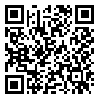
Journal of Health And Care

Volume 20, Issue 2 (summer 2018)
JHC 2018, 20(2): 131-138 |
Back to browse issues page
Download citation:
BibTeX | RIS | EndNote | Medlars | ProCite | Reference Manager | RefWorks
Send citation to:



BibTeX | RIS | EndNote | Medlars | ProCite | Reference Manager | RefWorks
Send citation to:
Shamshiri M, Abazari M, Poorkar M, Nasiri E. A Survey of Perceived Incivility among Nurses Working at Medical-Educational Centers in the City of Ardabil, Iran. JHC 2018; 20 (2) :131-138
URL: http://hcjournal.arums.ac.ir/article-1-887-en.html
URL: http://hcjournal.arums.ac.ir/article-1-887-en.html
Department of Critical Care Nursing, School of Nursing and Midwifery, Ardabil University of Medical Sciences, Ardabil, Iran
Abstract: (4772 Views)
Background & aim: Workplace incivility is one of the destructive behaviors in any organization, especially in the organizations providing health services. The purpose of this study was to assess the perceived incivility among nurses working in four educational-hospitals affiliated to Ardabil University of Medical Sciences (ARUMS).
Methods: This study was a descriptive-correlational design. Study population were all nurses working in educational hospitals in the city of Ardabil. Through a consensus sampling approach, the Guidroz's “Incivility in Workplace Questionnaire” was given to all nurses working hospitals affiliated to ARUMS and 600 out of 900 nurses returned the completed questionnaires. Data were analyzed using descriptive statistics, independent t-test, one-way ANOVA and Pearson correlation coefficient in SPSS software.
Results: 500 persons (83.3%) from 600 nurses participating in the study were female. The findings showed that perceived incivility among nurses originates from physicians (3.63±0.94), patient-family (2.99±0.85), general incivility (2.80±0.75), head nurses or supervisors (2.75±0.85), and other nursing colleagues (2.71±0.69). In addition, the differences between the mean scores of perceived incivility between these five sources were statistically significant (p<0.001).
Conclusion: Based on the findings of this study, nurses experience incivility from various sources especially from physicians and patients. So, it is necessary for hospital managers to address and resolve the uncivil behaviors through continuous education, role clarification, and improving the nursing’s image in the society.
Methods: This study was a descriptive-correlational design. Study population were all nurses working in educational hospitals in the city of Ardabil. Through a consensus sampling approach, the Guidroz's “Incivility in Workplace Questionnaire” was given to all nurses working hospitals affiliated to ARUMS and 600 out of 900 nurses returned the completed questionnaires. Data were analyzed using descriptive statistics, independent t-test, one-way ANOVA and Pearson correlation coefficient in SPSS software.
Results: 500 persons (83.3%) from 600 nurses participating in the study were female. The findings showed that perceived incivility among nurses originates from physicians (3.63±0.94), patient-family (2.99±0.85), general incivility (2.80±0.75), head nurses or supervisors (2.75±0.85), and other nursing colleagues (2.71±0.69). In addition, the differences between the mean scores of perceived incivility between these five sources were statistically significant (p<0.001).
Conclusion: Based on the findings of this study, nurses experience incivility from various sources especially from physicians and patients. So, it is necessary for hospital managers to address and resolve the uncivil behaviors through continuous education, role clarification, and improving the nursing’s image in the society.
Type of Study: correlation design |
References
1. Lux KM, Hutcheson JB, Peden AR. Successful management of disruptive behavior: a descriptive study. Issues in Mental Health Nursing. 2012;33(4):236-43. [DOI:10.3109/01612840.2011.647255] [PMID]
2. Andersson LM, Pearson CM. Tit for tat? the spiraling effect of incivility in the workplace. Academy of Management Review. 1999;24(3):452-71.
https://doi.org/10.2307/259136 [DOI:10.5465/amr.1999.2202131]
3. Lai HL, Lin YP, Chang HK, Wang SC, Liu YL, Lee HC, et al. Intensive care unit staff nurses: predicting factors for career decisions. Journal of Clinical Nursing. 2008;17(14):1886-896. [DOI:10.1111/j.1365-2702.2007.02180.x]
4. Pearson CM, Andersson LM, Porath CL. Assessing and attacking workplace incivility. Organizational Dynamics. 2000;29(2):123-37. [DOI:10.1016/S0090-2616(00)00019-X]
5. Winstanley S, Whittington R. Violence in a general hospital: comparison of assailant and other assault‐related factors on accident and emergency and inpatient wards. Acta Psychiatrica Scandinavica. 2002;106(s412):144-47. [DOI:10.1034/j.1600-0447.106.s412.31.x]
6. Luparell S. Incivility in nursing: the connection between academia and clinical settings. Critical Care Nurse. 2011;31(2):92-95. [DOI:10.4037/ccn2011171] [PMID]
7. Rosenstein AH, O'daniel M. Disruptive behavior and clinical outcomes: perceptions of nurses and physicians: nurses, physicians, and administrators say that clinicians' disruptive behavior has negative effects on clinical outcomes. The American Journal of Nursing. 2005;105(1):54-64. [DOI:10.1097/00000446-200501000-00025]
8. Kalantari S, Hekmatafshar M, Jouybari L, Sanagoo A, Mohammadi R. Workplace behaviors and its correlation with demographic characteristics: perspective of nurses in teaching hospitals in Gorgan. Journal of Health Promotion Management. 2012;1(4):7-15.
9. Hosseinpour-Dalenjan L, Atashzadeh-Shoorideh F, Hosseini M, Mohtashami J. The correlation between nurses' work engagement and workplace incivility. Iranian Red Crescent Medical Journal. 2017;19(4):e45413. [DOI:10.5812/ircmj.45413]
10. Elmblad R KG, Lebeck L. Workplace incivility affecting CRNAs: a study of prevalence, severity, and consequences with proposed interventions. AANA Journal. 2014;82:437-45. [PMID]
11. Brooks AMT. Nurse physician disruptive behavior: building a culture of safety and quality. 27th International Nursing Research Congress. Cape Town: South Africa; 2016. 16- Kanter RM. Power failure in management circuits. Harvard Business Review. 1979;57(4):65-75.
12. Mikaelian B, Stanley D. Incivility in nursing: from roots to repair. Journal of Nursing Management. 2016;24(7):962-69. [DOI:10.1111/jonm.12403] [PMID]
13. Szutenbach MP. Bullying in nursing: roots, rationales, and remedies. Journal of Christian Nursing. 2013;30(1):16-23. [DOI:10.1097/CNJ.0b013e318276be28]
14. Shen HC, Chiu HT, Lee PH, Hu YC, Chang WY. Hospital environment, nurse–physician relationships and quality of care: questionnaire survey. Journal of Advanced Nursing. 2011;67(2):349-58. [DOI:10.1111/j.1365-2648.2010.05502.x] [PMID]
15. Campana KL, Hammoud S. Incivility from patients and their families: can organisational justice protect nurses from burnout? Journal of Nursing Management. 2015;23(6):716-25. [DOI:10.1111/jonm.12201] [PMID]
16. Kanter RM. Power failure in management circuits. Harvard Business Review. 1979;57(4):65-75.
17. Vessey JA, DeMarco R, DiFazio R. Bullying, harassment and horizontal violence in the nursing workforce. Annual Review of Nursing Research. 2011;28(1):133-57. [DOI:10.1891/0739-6686.28.133]
Send email to the article author
| Rights and permissions | |
 |
This work is licensed under a Creative Commons Attribution-NonCommercial 4.0 International License. |




